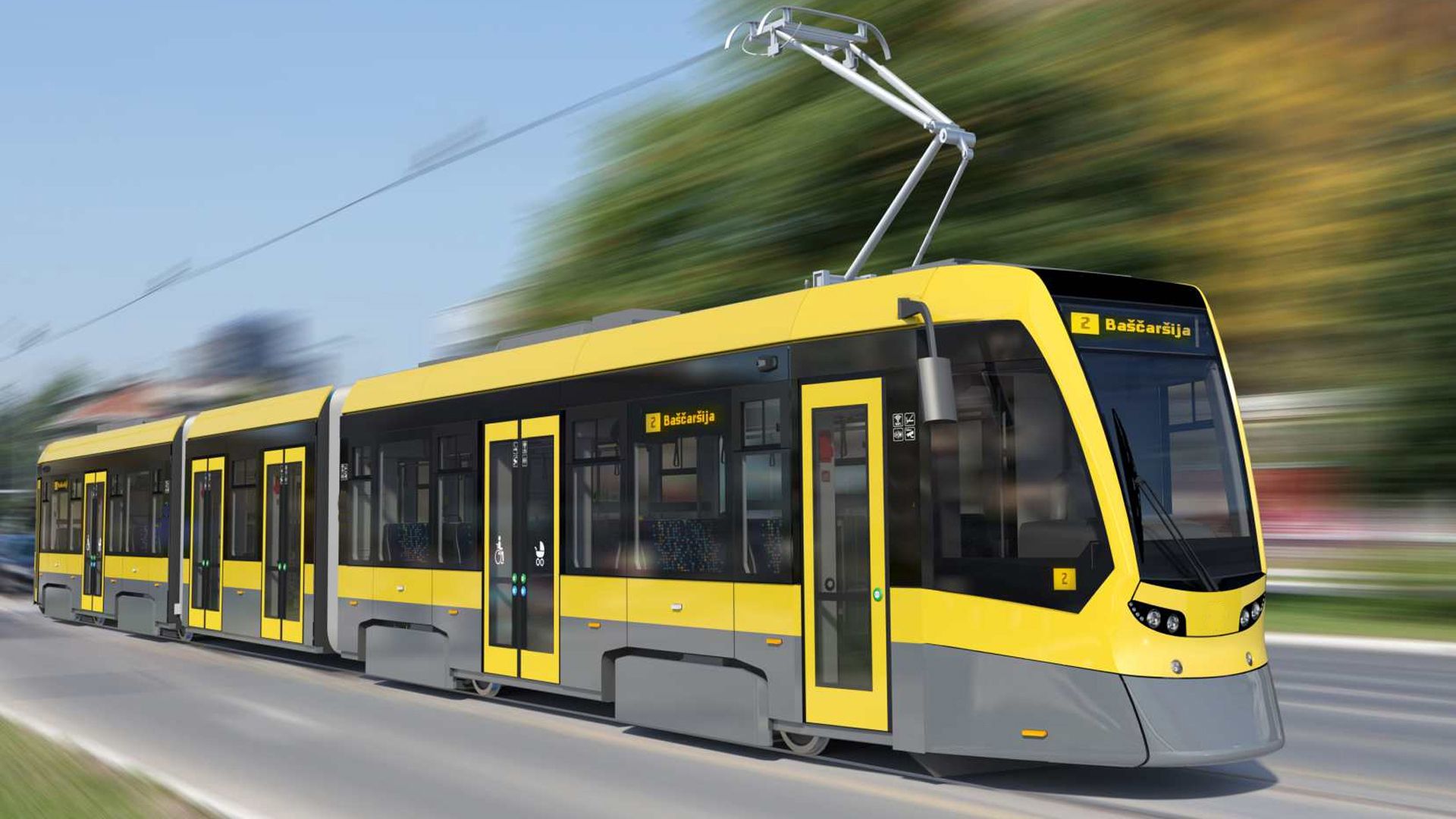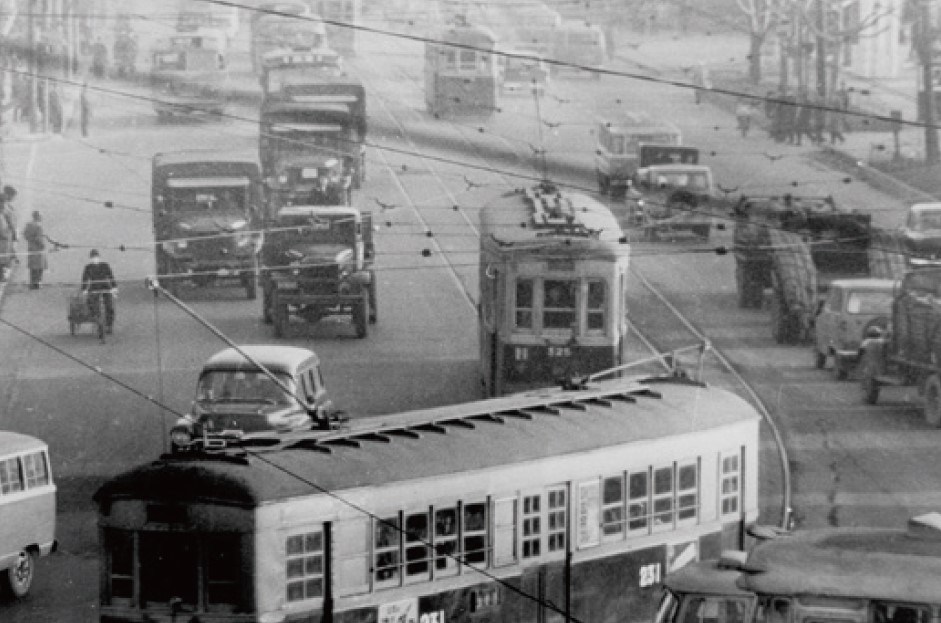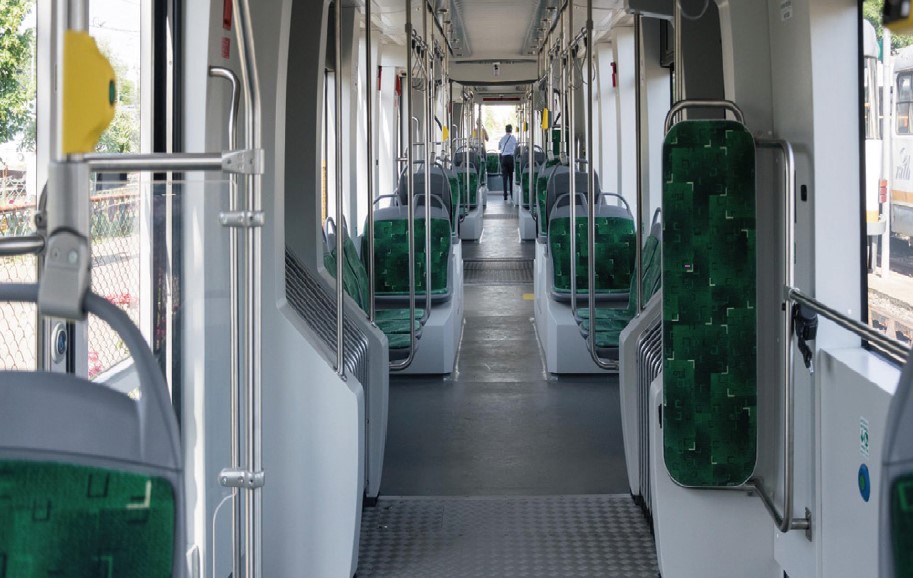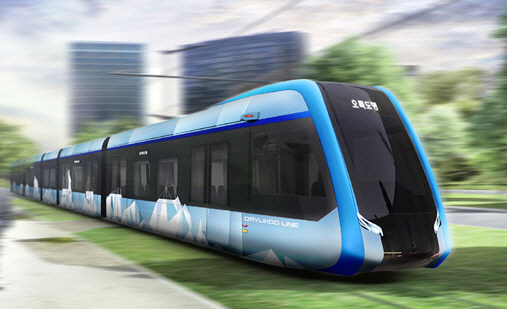
Trams, a transportation system normally only seen abroad, are potentially making an exciting return to various cities, including Busan, Daejeon, and Ulsan. In July, Hwaseong City announced its plan to reinstall trams by December 2027. However, voices of concern are arising for this new form of transportation. The Sungkyun Times (SKT) aims to explore the necessity of trams in Korea and dive into depth about their effectiveness and Korea’s future with trams.
What Is a Tram?
It Is a Bus, It Is a Train… It Is a Tram!

A “tram” is a railway vehicle that travels on railway tracks on public urban streets. Trams are already a widely used form of public transportation in several cities, including Melbourne and Hongkong, since the early 1900s. For one, trams are one of the most environmentally friendly forms of public transportation; they are powered by renewable electricity, which reduces harmful carbon emissions. Therefore, for countries that have declared carbon neutrality by 2050, including Korea, adopting trams is a crucial part of the roadmap to success. Another primary reason local governments are pushing for the reintroduction of trams is to resolve traffic congestion. If people use trams instead of cars, the number of cars on the road will naturally be reduced, and traffic congestion will be resolved – this is also plausible as trams can carry four to five times the number of passengers compared to a bus. Furthermore, trams move above ground and are not elevated like buses. Since walking downstairs to an underground station or up a step onto a bus is not required, they are considered the most efficient and convenient means of transportation for everyone, including the young, elderly, and disabled.
Trams Currently in Korea
Surprisingly, trams are not an entirely new means of transportation in Korea. Until 1968, trams were also a common form of public transportation for Korean citizens, but they were soon suspended due to their complicated wires and safety issues. However, the new up-and-coming trams are powered through batteries, so they do not require wires. They are also expected to resolve urban traffic congestion. The reintroduction of trams has been discussed since 2012, but was delayed due to a lack of related laws. At least two car lanes are required for tram rails, and vehicles cannot operate on the rails. This inefficiency led to traffic congestion when trams were introduced and caused congestion costs to be overstated. Congestion costs are the ultimate cost of additional losses caused by traffic congestion. These include the loss of time and increased operating costs when vehicles operate below their recommended speed. To resolve this problem, the previous government proposed a “Partial Amendment Bill to the Road Traffic Act” in January 2021. Later, the Urban Railroad Act allowed the possibility of both trams and cars to travel together on narrow streets. As related laws started resolving, the obstacles that delayed local tram reintroduction were removed, and the wheels started rolling again.
Concerns Surrounding Trams
Dissonance between Trams and Existing Public Transport
Although the advantages of the tram itself are significant, trams are still an unfamiliar means of transportation in Korea. So, meticulous railroad and tram body design are crucial. However, there are concerns that construction on already functioning roads could ruin the existing transportation system. Ahn Jeong-hwa, a researcher at the Korea Transportation Institute (KOTI), stated in an interview with the Ministry of Land, Infrastructure, and Transport (MOLIT) that the actual commercial service should follow after seeing a tangible demonstration of a tram running. However, given the current situation, there are no precedent cases. Simply put, buses do not need dedicated routes like trams and are scalable, so routes can be added or changed if necessary. On the other hand, trams must stay on their dedicated routes. For this reason, if projects are not carefully designed, there may be losses due to traffic confusion and congestion costs even after a budget is invested and trams are installed. Traffic confusion resulting from trams could risk traffic accidents. Hence, it is no surprise that 2019 research by Hyundai revealed that the frequency of tram accidents abroad, compared to other means of transportation, is the highest among all traffic collisions.

Construction Costs of Trams
Currently, construction costs are the biggest obstacle to the reintroduction of trams. Although building trams is cheaper than building subways, they are much more expensive than buses. While the construction cost for a kilometer of bus tracks is about 3 billion won, it is about 20 billion for trams. On July 17th, it was revealed that the construction of the Daejeon Metro Line 2 was double the expected cost, which raised controversy on the unaffordable cost of introducing trams. As this is the first case of reintroducing trams in Korea, the appropriate cost calculation of the unit price for trams has yet to be decided. Therefore, although Daejeon initially planned to operate trams by 2025, the proposition was delayed to 2028. Such a delay occurred for many reasons, including the increase in prices, the cost of changing power supply facilities, reinforcing structures, the addition of 10 more stops, and much more. There are several other instances where the final cost exceeded the expected budget by double the price. If the project costs continue to increase while searching for a solution for this issue, the tram business will be postponed accordingly.
The Future of Trams
Verification of Efficiency and Safety
It is necessary to discuss the revision of the Road Traffic Act in earnest so that trams can also be introduced in highdensity cities. Subsequently, a policy to distribute urban traffic through establishing a tram and bus network is needed. Trams should be introduced in environmental protection areas or places with high traffic congestion. Alternatively, networks should be well established to create green environmental cities while ensuring no transportation inconvenience. Yoo Jung-hoon, a professor of transportation system engineering at Ajou University, suggested that trams should be prioritized on the road. Furthermore, MOLIT has established the “Tram Vehicle Standard Specification” that can be used by local governments when planning tram projects. Until now, there have been difficulties in selecting vehicles and establishing route plans because there are no existing trams in Korea and the types of tram vehicles by overseas manufacturers vary. Establishing an institutional foundation without information on various tram types and precedent domestic standards may be difficult. Therefore, the “Tram Vehicle Standard” was established considering trams already operating overseas for the vehicle body, user convenience, and safety. Similarly, the “Tram Vehicle Standard” can resolve various vehicle types, maintenance, operation safety, and efficiency issues.

Today’s Price for a Better Tomorrow
Tram construction is not cheap, but it is a necessary price to pay for the era of carbon neutrality. Even then, tram construction costs only one-sixth of urban railway construction costs, and trams are built on roads owned and operated by the state or local governments. Thus, trams can avoid civil complaints and compensation problems. Moreover, trams are much more efficient than buses, as they can accommodate more passengers. Additionally, if trams are installed by analyzing the percentage of vehicles used in the city and why citizens use those vehicles before installing the tram, demand for tram movement will be maximized. Trams can also be used as a tourist attraction. For instance, Melbourne operates free trams for tourists to travel to various landmarks throughout the city. Despite the many advantages of trams, citizens oppose the reintroduction because the economic consequences and the time spent on each project have been overwhelming. In response to this concern, Son Se-hyung, a Professor in the Department of Architecture at Sungkyunkwan University (SKKU), explained, “We need sufficient public relations and guidance activities by the institution so that citizens can fully understand the characteristics of the tram.” The time and economic expenditure for trams is a necessary investment for the sustainable future of Korea.

The benefits of trams have been put under the spotlight worldwide for their environmental advantages and urban regeneration. Furthermore, there is no doubt that Korea’s technological advances will lead to a triumphant return of trams after half a century - trams are a wait-worthy investment for the future of a sustainable Korea. As such, the SKT hopes that Kingos can also take some time to think over the reintroduction of trams.
